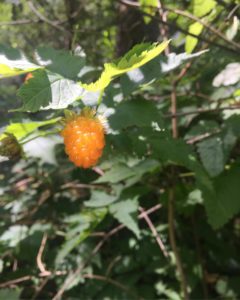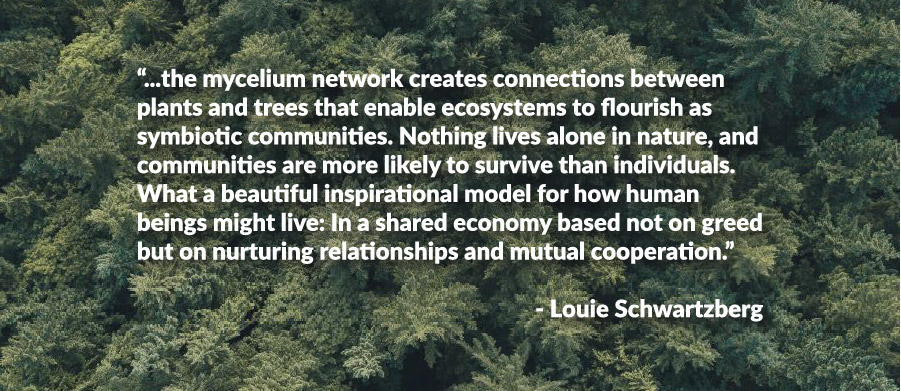
What if I told you that trees communicate with each other? Or that plants each support each other to promote the health of their community?
I was always taught that a forest ecosystem is driven by competition – that seedlings enter into a game of survival of the fittest as they compete for finite amounts of water, sunlight, and nutrients. Turns out that this is a major oversimplification. Over the past few decades, ecologists have been rewriting this narrative as their research reveals that it is collaboration, not competition, that allows forest plants to survive.
Suzanne Simard and the Wood Wide Web
This research is spearheaded by UBC professor Dr. Suzanne Simard. Dr. Simard’s career began in the logging industry, following in the footsteps of her grandfather and father. It was not long before Simard began to question forestry practices after witnessing profit-driven decision-making and exploitative clearcutting practices that greatly differed from the selective horse logging her grandfather practiced. Realizing that the sickly, dying seedlings that had been planted in clear cuts were missing an essential but unknown component for their success, she drew upon her field observations and lifetime experience growing up in forests to find the missing puzzle piece. Her questioning led her to a job conducting field experiments for the B.C. Forest Service.
It was through this fieldwork that she discovered that there is far more to the forest than meets the eye. Her research revealed that plants are connected by an underground fungal network called mycorrhizae (singular: mycorrhiza), which Simard termed the “Wood Wide Web”. The mycorrhizae form a partnership, or symbiotic relationship, with plant roots. The fungi supply nutrients and water to the roots, and in return the plants feed the fungi with energy in the form of carbon-rich sugar.
She also found that there are several different types of mycorrhizal fungi that connect groups of plants together in different networks. You can think of these networks like radio channels. Each type of fungi joins certain plant species together, but the channels do not connect to each other. Two of these species of fungi are ectomycorrhizal fungi, which wrap around plant roots, and arbuscular mycorrhizal fungi, which penetrate and reside within the root cells.
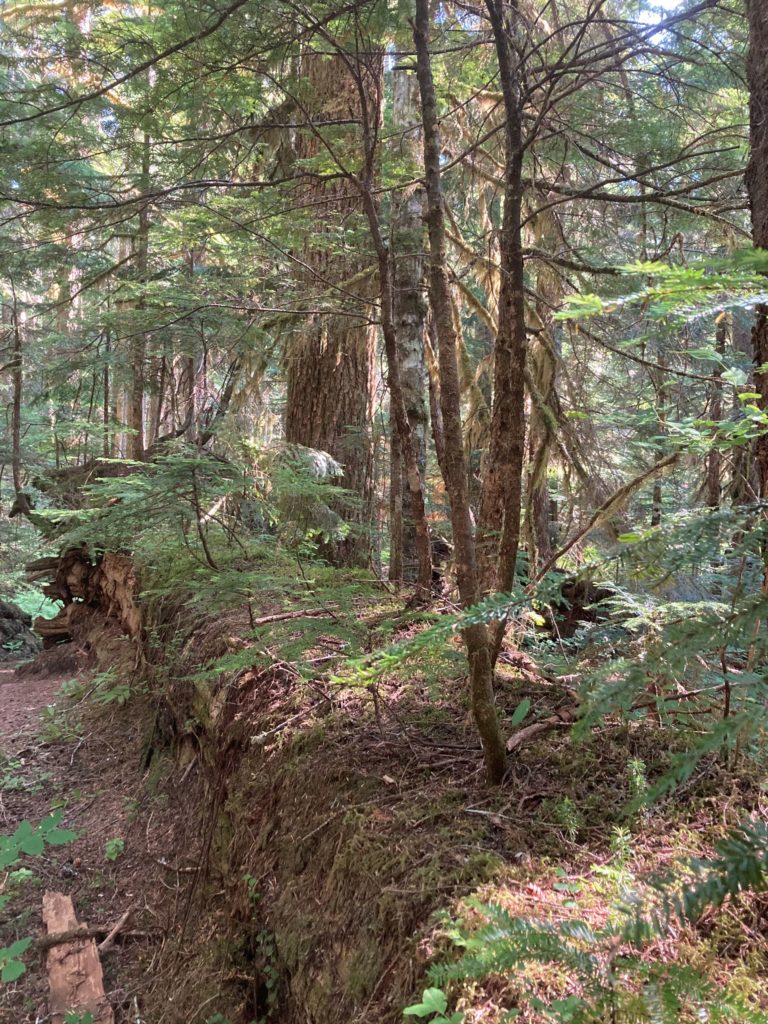
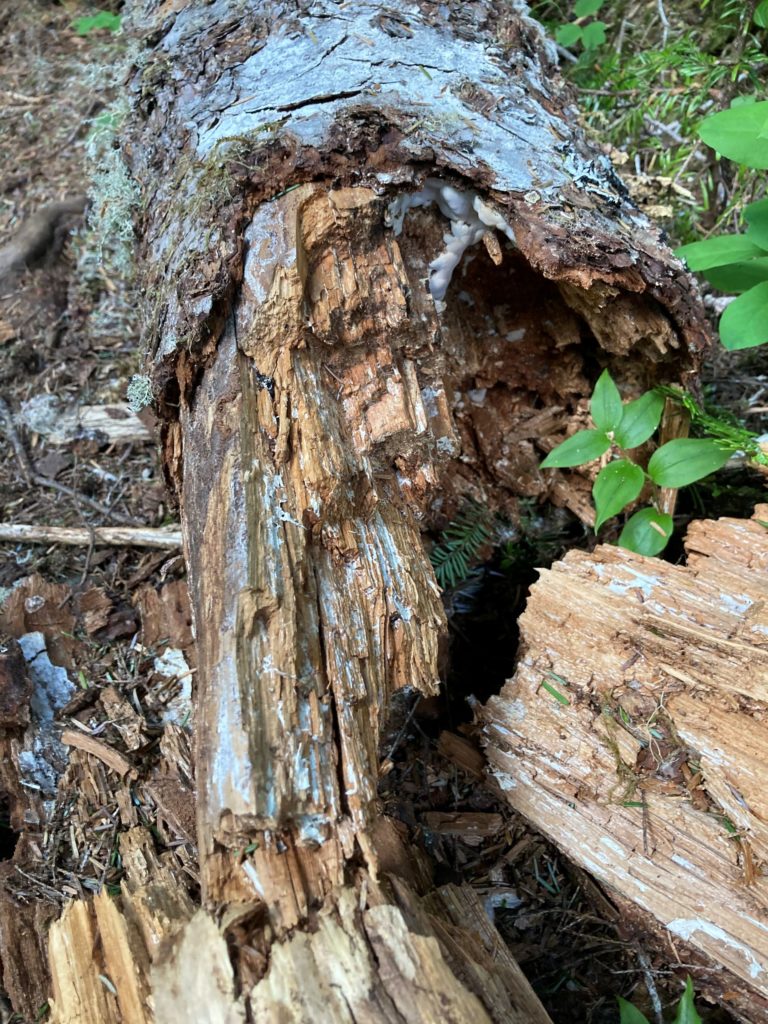

Forest families and community living
As Simard continued with her field experiments, she revealed an even deeper mycorrhizae-plant relationship. Plants were “communicating” with each other by sending water, carbon, nitrogen, phosphorous, micronutrients, defence signals and allelochemicals (growth-stunting substances produced by plants) along the mycorrhizal network. She found that plants could communicate with individuals of the same or different species as long as they were connected along the same mycorrhizal network.
This transfer of resources differs based on the needs of the source plant and the recipient. For instance, in an experiment involving alder trees and lodgepole pine saplings, the alder trees pulled water up from deep in the soil with their taproots and exuded it into the dry surface soil and along the mycorrhizal network to the pine saplings in a process called “hydraulic redistribution”, thereby reducing water stress for the saplings. Alder, as a nitrogen-fixing species, also supplied the pine saplings with nitrogen. Similarly, Simard found that paper birch trees provide Douglas fir saplings with carbon in the summer when the saplings were shaded, and in turn the Douglas firs transfer carbon to the birch trees after they lose their leaves in the fall.
Furthermore, she discovered that the largest, oldest trees in the forest, which she has dubbed “Mother Trees”, can recognize their offspring and kin, and favor them over unrelated trees. These elders have the largest root systems of any plants in the forest and are therefore most connected to the mycorrhizal network. They feed the entire ecosystem using this web of life and can even increase resource flow in response to pests or disease.

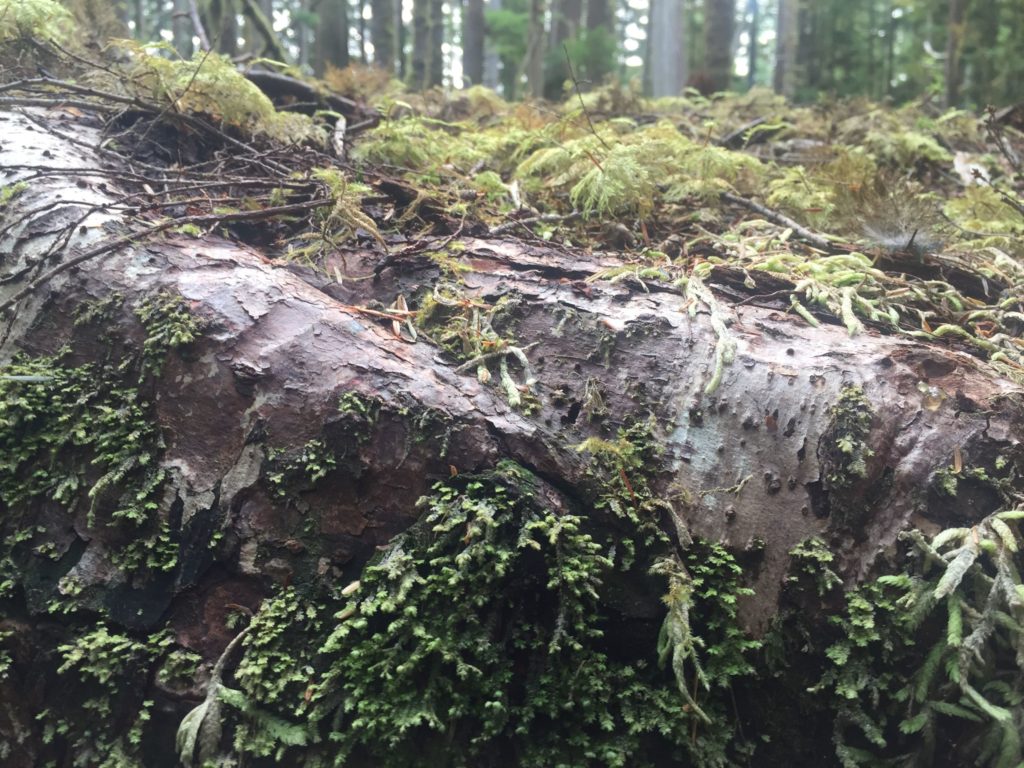
Community resilience and the importance of diversity
These complex interactions underscore the importance of community. Just like how humans thrive in community, so do plants: it’s not just the biggest and strongest individuals that survive, but collaboration that leads to success and resilience of the entire community. In this way, plants and animals, including humans, are alike.
It’s important to acknowledge the vital role that elders play in any community. The enduring strength and knowledge of elders are paramount to facilitating community connection, linking generations, building resilience, nurturing those in need, and passing down wisdom. In a healthy forest, as in a healthy community, there are trees at all stages of life, from hundreds of years old down to tiny saplings dotting the forest floor, and countless species of plants that foster resilience and promote self-regeneration.
Current forestry practices stand in stark contrast to this. Clear cuts are often replanted in monocultures on land that has been sprayed with Roundup (glyphosate) to kill the native plants, or “weeds”, that industry accuses of taking up resources needed by the planted saplings. Aside from the fact that glyphosate is persistent in the environment and has understudied ecotoxological impacts, this viewpoint also fails to acknowledge the complexity and dynamic nature of ecosystems.
Forest plants have adapted to be interdependent. Native plants nurture saplings and set them up for long-term success. Alders provide water and nitrogen. Bunchy pinegrass provides shade from the increasingly scorching sun. Rhododendrons provide shelter from frost. Paper birch provides carbon. Shrubs reduce disease, erosion, and fire. Each species contributes to the community’s health. This is without even counting the myriad ecosystem services provided by forests, such as carbon sequestration, nutrient cycling, clean air and water, habitat creation, and cultural and medicinal significance for humans.
![]()

Implications
Dr. Simard’s research was initially ridiculed and rejected by policy makers, industry workers, and politicians despite being published in peer-reviewed journals. It took decades and a considerable amount of fortitude for her findings to make their way into the public realm. Now, her findings are widely accepted and have spurred a paradigm shift in our understanding of forest ecosystems.
Viewing forests as an interconnected community of plants underscores the need to conserve large, contiguous areas of land rather than small fragments. Recognizing the interconnectivity of plants and acknowledging that each species fills a niche that contributes towards overall ecosystem health emphasises the need for diversity in reforestation projects and, consequently, the counterproductivity of dousing clear cuts with Roundup.
It’s vital to recognize the role that forest ecosystems play in climate change mitigation. By sharing resources, plants have increased resilience to drought, heatwaves, pests, disease, and other disturbances, and are more tolerant to stress. Forests, particularly old growth, also act as carbon sinks, sequestering carbon from the atmosphere and storing it aboveground in woody material and organic matter and belowground via mycorrhizae. Healthy forest ecosystems play an integral part in any climate change management strategy.

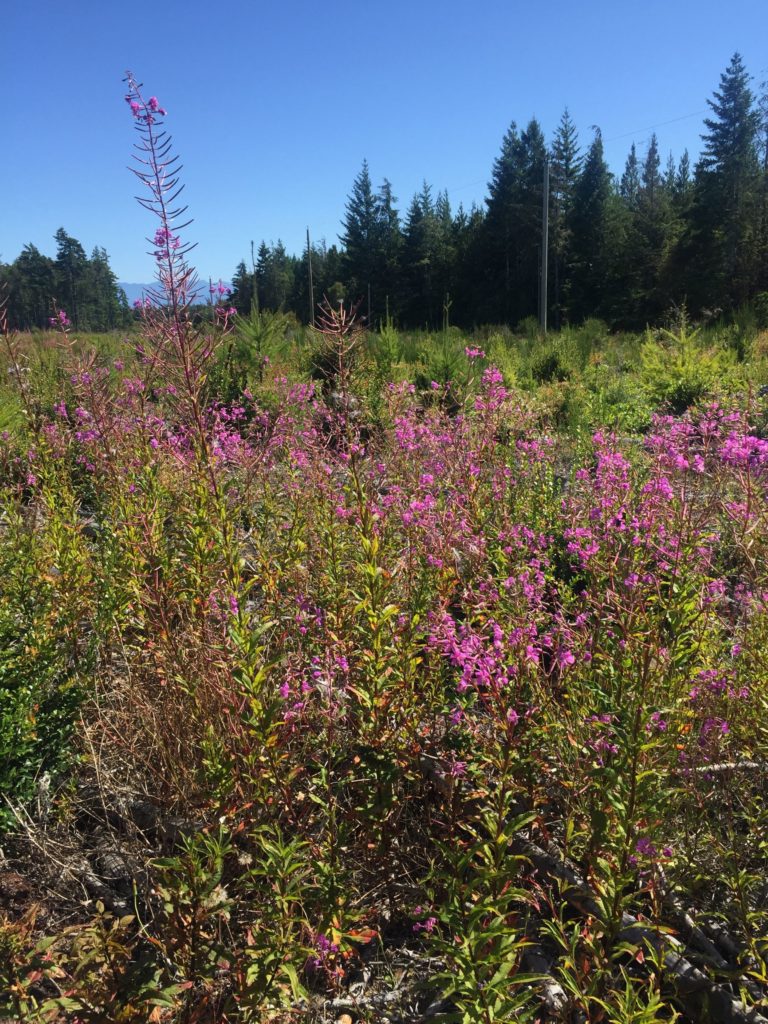
Take action
This is all very exciting, but what can you do with all this information?
- For a more succinct overview of what you just read here, take a look at this article from The Narwhal.
- Gain a deeper understanding of Suzanne Simard’s work by reading her new book, Finding The Mother Tree.
- Read this three-page, beautifully-written summary of Mother Trees from Simard.
- Stay up to date on the latest research by following along with Simard’s Mother Tree Project.
- Advocate for old growth forest protection and change in the logging industry by:
- Contacting your MLA and demanding (1) the immediate halt of old growth logging and (2) the adoption of the 14 recommendations laid out in the Old Growth Strategic Review Panel’s report.
- Supporting the active protest against old growth logging at Fairy Creek.
- Getting involved with conservation organizations such as Ancient Forest Alliance and the Rainforest Flying Squad.
- Learn more about what we know about mycorrhizal networks in this (somewhat outdated) open source academic article published in Fungal Biology Reviews.
- Listen to Suzanne Simard’s TED Talk or her excellent seminar for The Long Now (embedded below).
- Encourage mycorrhizal networks to develop in your garden by building your soil using ecological gardening practices. Add mycorrhizal fungi to your garden to improve its resistance to stressors such as disease, pests, and adverse weather. Minimize soil disturbance so that you don’t destroy the mycorrhizal network.


